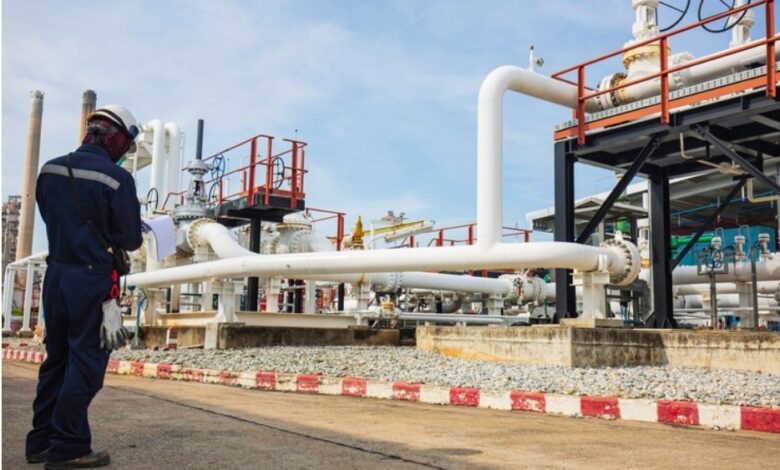Gas Midstream Companies: Unveiling Their Vital Role in the Energy Landscape

Gas midstream companies serve as the backbone of the energy sector, facilitating the transportation and distribution of natural gas from production sites to end-users. This article aims to shed light on the indispensable role these companies play in shaping the energy landscape, ensuring a reliable and efficient supply of natural gas.
The Gas Midstream Sector at a Glance
Understanding the Midstream Segment
Before delving into the specifics of gas midstream companies, it’s crucial to grasp the broader midstream sector’s functions. Midstream activities involve the transportation, storage, and wholesale marketing of energy products, with natural gas being a primary focus.
Gas midstream companies operate the infrastructure that connects gas producers with consumers, ensuring a seamless flow of energy resources.
Components of Gas Midstream Operations
Gas midstream operations encompass an extensive network of pipelines, compression stations, and storage facilities. These components work in tandem to transport natural gas from extraction points to distribution hubs and, ultimately, to end-users.
Understanding the intricacies of this infrastructure is key to appreciating the vital role gas midstream companies play in the energy supply chain.
The Transportation Network: Pipelines and Beyond
Pipeline Networks
The most visible and fundamental aspect of gas midstream operations is the extensive network of pipelines that crisscross continents.
These pipelines serve as the arteries of the energy system, efficiently transporting natural gas over long distances. Gas midstream companies invest heavily in the construction, maintenance, and expansion of these pipelines to meet the growing demand for clean and reliable energy.
Compression Stations
To maintain the pressure needed for efficient gas transportation, compression stations are strategically placed along the pipeline network. These stations play a crucial role in ensuring a steady flow of natural gas, and optimizing the entire transportation process.
Gas midstream companies leverage advanced technologies to enhance the efficiency and reliability of compression stations, minimizing energy loss during transit.
Storage Facilities: Balancing Supply and Demand
Underground Storage
Gas midstream companies actively engage in the development and maintenance of underground storage facilities.
These reservoirs act as a buffer, allowing for the storage of excess gas during periods of low demand and ensuring a stable supply during peak consumption times. The strategic placement of these storage facilities contributes to the resilience and flexibility of the overall gas distribution system.
LNG Terminals
As the global demand for natural gas continues to rise, liquefied natural gas (LNG) has become a significant player in the energy market. Gas midstream companies often operate LNG terminals, where gas is cooled to a liquid state for more efficient storage and transportation.
These terminals facilitate the international trade of natural gas, connecting producers with consumers across the globe.
Economic Contributions and Employment
Driving Economic Growth
Gas midstream companies make substantial contributions to local and global economies. The construction and operation of pipeline infrastructure, compression stations, and storage facilities generate employment opportunities and stimulate economic growth in the regions they serve.
Additionally, the reliable supply of natural gas supports various industries, further enhancing economic development.
Investment in Innovation
To meet the evolving needs of the energy sector, gas midstream companies invest in research and development, driving innovation in pipeline technology, safety measures, and environmental sustainability. These investments not only improve the efficiency of gas transportation but also contribute to the overall advancement of the energy industry.
Environmental Considerations
Mitigating Environmental Impact
While natural gas is often considered a cleaner alternative to other fossil fuels, gas midstream companies recognize the importance of minimizing their environmental footprint.
Through the implementation of advanced technologies and best practices, these companies strive to reduce methane emissions, protect ecosystems, and contribute to a more sustainable energy future.
Community Engagement and Responsiveness
Gas midstream companies understand the importance of maintaining positive relationships with the communities in which they operate.
Engaging with local stakeholders, addressing environmental concerns, and implementing responsible land use practices are integral to building trust and ensuring the long-term sustainability of gas midstream operations.
Regulatory Landscape and Safety Measures
Compliance with Regulations
Gas midstream companies operate in a highly regulated environment, with stringent safety and environmental regulations governing their activities.
Compliance with these regulations is non-negotiable, and companies must continuously adapt to evolving standards to ensure the safe and responsible operation of their infrastructure.
Safety Measures and Emergency Response
Ensuring the safety of gas transportation is paramount for midstream companies. Rigorous safety measures, including regular inspections, advanced monitoring systems, and comprehensive emergency response plans, are in place to address potential risks and minimize the impact of incidents on both people and the environment.
Conclusion
In conclusion, gas midstream companies serve as indispensable pillars of the energy landscape, connecting producers and consumers through a vast network of infrastructure. From pipelines and compression stations to storage facilities and LNG terminals, these companies play a vital role in ensuring a reliable, efficient, and sustainable supply of natural gas.
As the world transitions towards cleaner energy solutions, the innovations and commitments of gas midstream companies are instrumental in shaping a future where energy security and environmental responsibility go hand in hand.





